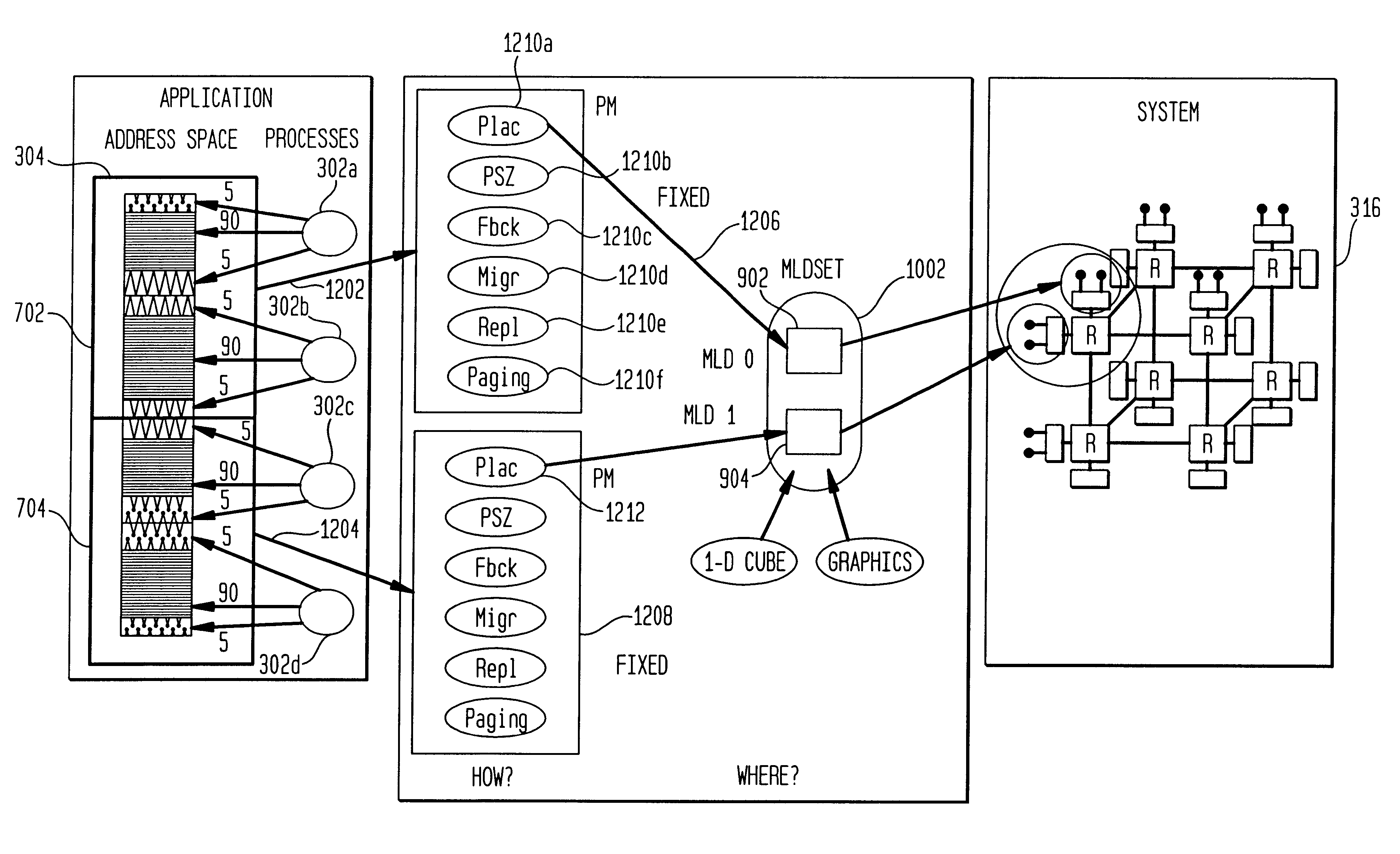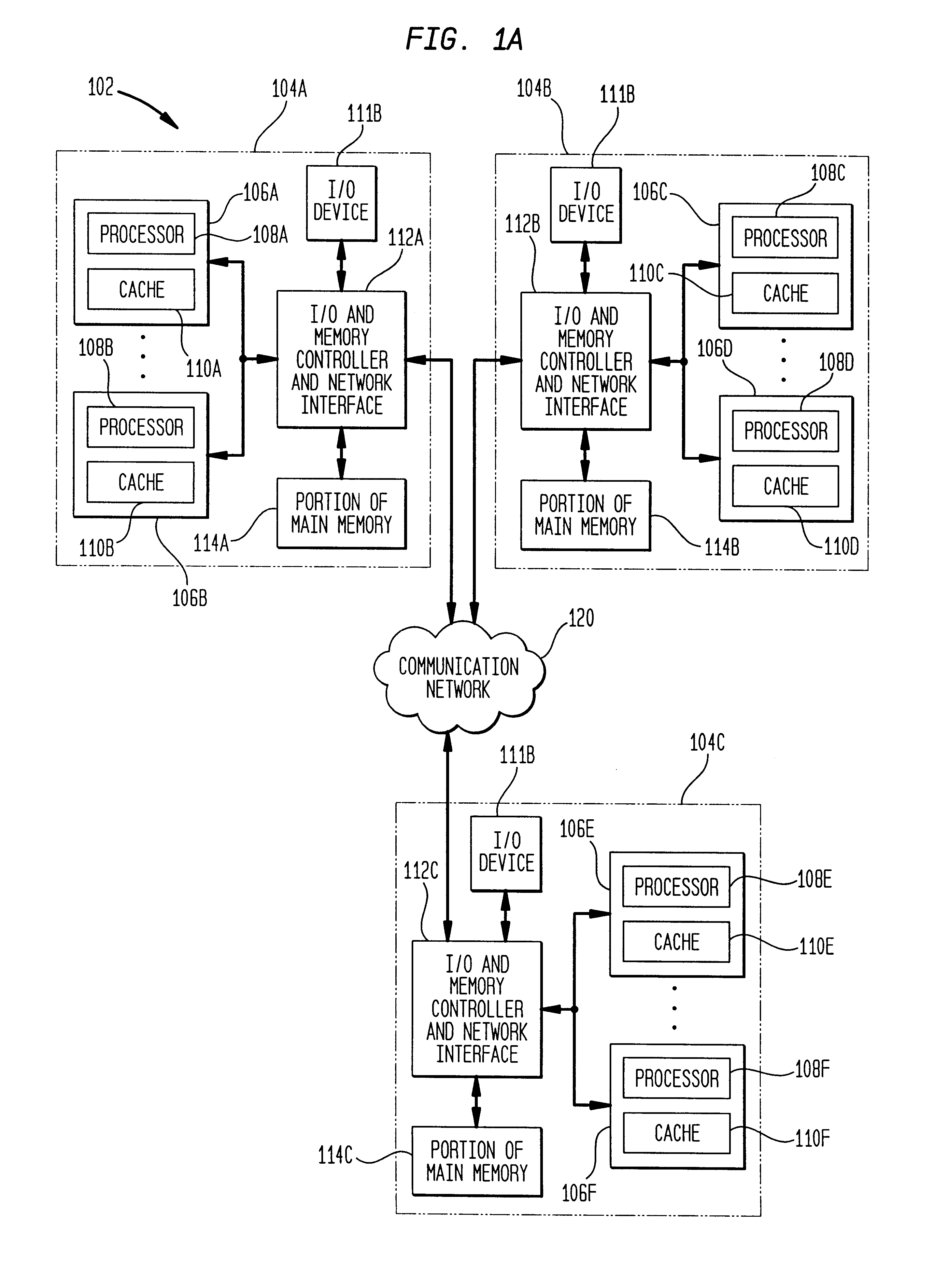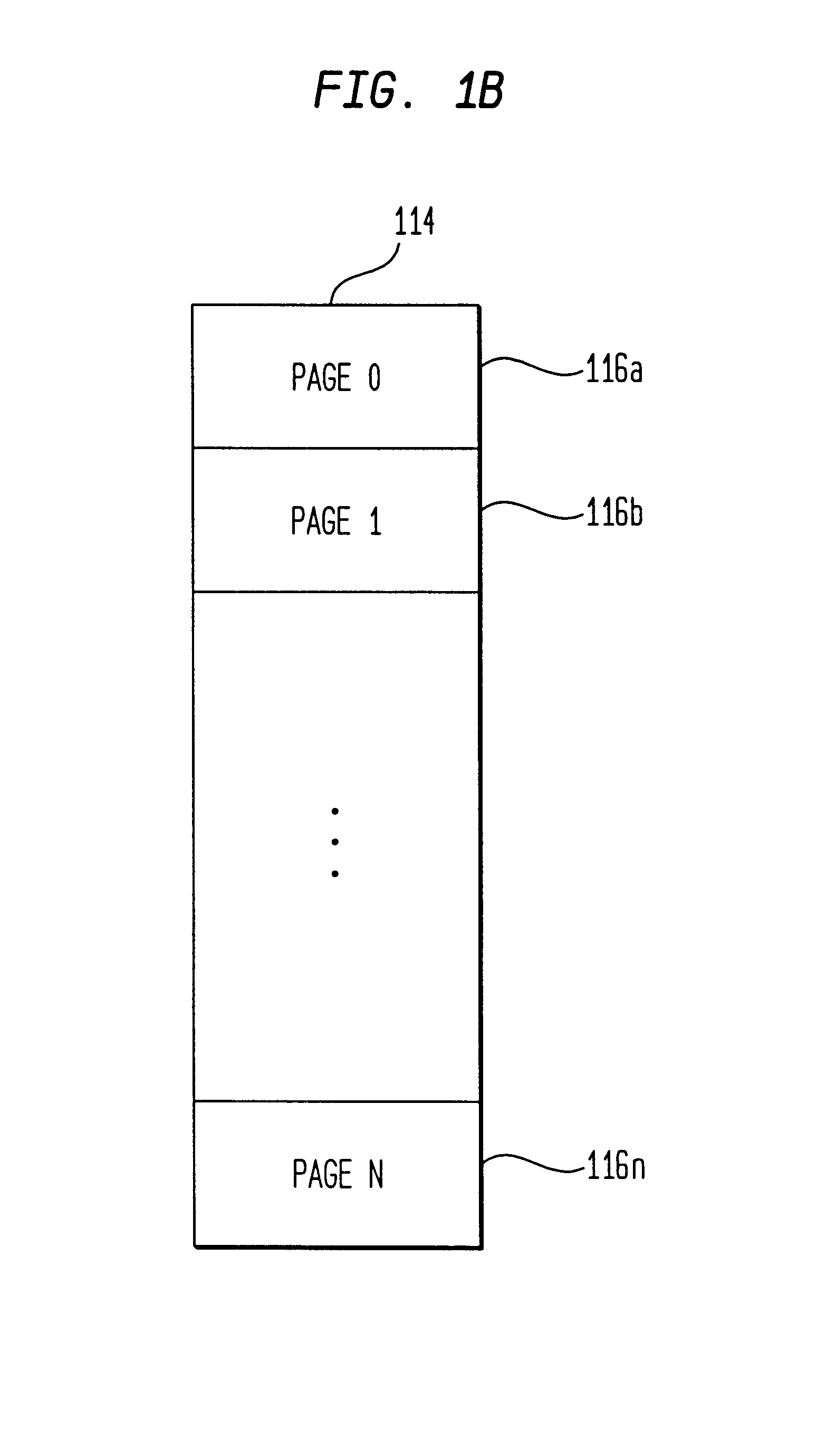Method, system and computer program product for managing memory in a non-uniform memory access system
a memory access and non-uniform technology, applied in the direction of memory adressing/allocation/relocation, multi-programming arrangements, program control, etc., can solve the problems of system insufficiency, system inability to scale, and predetermined operating system procedures may not be optimal for all types of program applications
- Summary
- Abstract
- Description
- Claims
- Application Information
AI Technical Summary
Benefits of technology
Problems solved by technology
Method used
Image
Examples
example code
The following is a fragment of FORTRAN code
DPLACE(1)
The following is a C language code fragment:
When linking C or FORTRAN programs, the flag -idplace will automatically invokes the correct lib_dplace library,
FILES
/ usr / lib / libdplace.so
/ usr / lib64 / libdplace.so
/ usr / lib32 / libdplace.so
DEPENDENCIES
These procedures are only available on NUMA systems. In order to avoid conflicts with Fortran's libmp, it is advisable to set the environment variable _DSM_OFF to disable libmp's NUMA functionality before running programs that are linked with lib_dplace.
SEE ALSO
dplace(1), dplace(5)
DLACE(1)
NAME
dplace--a NUMA memory placement tool
SYNOPSIS
dplace [-place placement-file]
[-data_pagesize n-bytes]
[-stack_pagesize n-bytes]
[-text_pagesize n-bytes]
[-migration threshold]
[-propagate]
[-mustrun]
[-v[erbose]]
program [program-arguments]
DESCRIPTION
The given program is executed after placement policies are set up according to command line arguments and the specifications described in placement_file.
OPTIONS
_place pla...
example
To place data according to the file placement_file for the executable a. out that would normally be run by:
% a.out out
a user would write:
% dplace -place placement-file a.outout.
The following is an example placement file placement-file when a.out is two threaded:
This specification, would request 2 nearby memories from the operating system. At creation, the threads are requested to run on an available CPU which is local to the specified memory. As data and stack space is touched or faulted in, physical memory is allocated from the memory which is local to the thread which initiated the fault.
PUM
 Login to View More
Login to View More Abstract
Description
Claims
Application Information
 Login to View More
Login to View More - R&D
- Intellectual Property
- Life Sciences
- Materials
- Tech Scout
- Unparalleled Data Quality
- Higher Quality Content
- 60% Fewer Hallucinations
Browse by: Latest US Patents, China's latest patents, Technical Efficacy Thesaurus, Application Domain, Technology Topic, Popular Technical Reports.
© 2025 PatSnap. All rights reserved.Legal|Privacy policy|Modern Slavery Act Transparency Statement|Sitemap|About US| Contact US: help@patsnap.com



